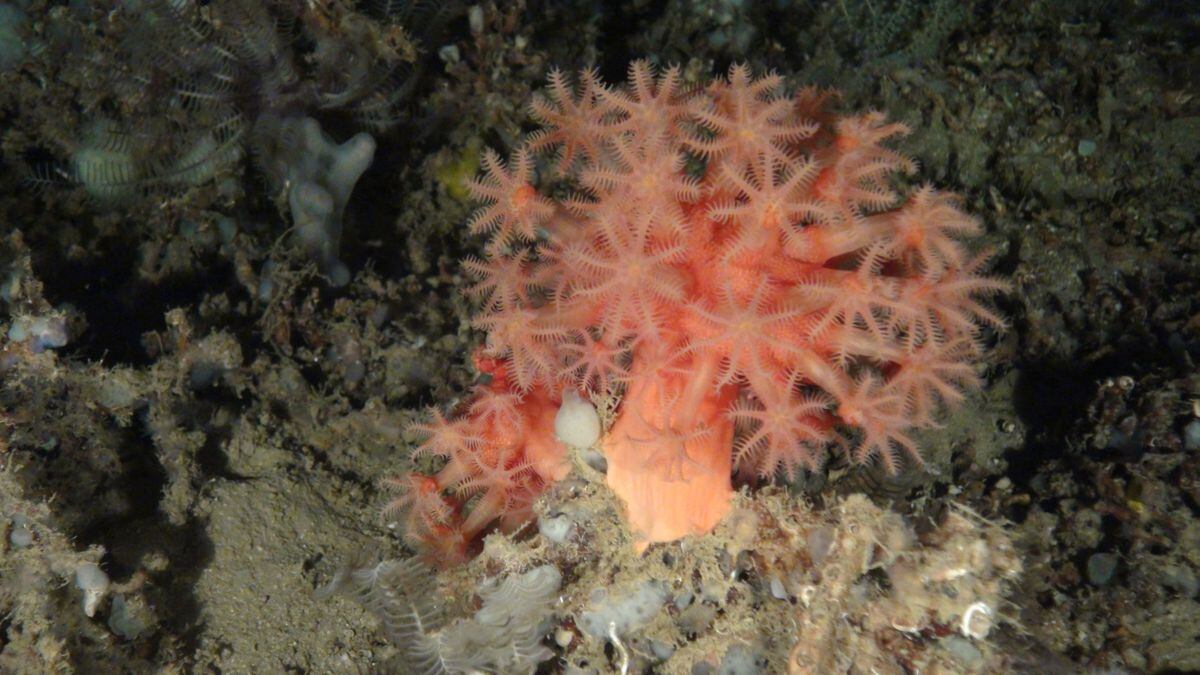In 2011, the NGO Oceana discovered in one of its expeditions a large deep-sea coral reef on the Cabliers bank, a geological formation of seamounts located in the Alboran Sea. A unique place in the Mediterranean due to the fact that no other of similar dimensions is known (it extends for about 25 kilometers in length), it is home to a large number of species, and is alive and growing. But this living fossil – estimated to have been under construction for 400,000 years – was not protected, until this Friday when Mediterranean countries agreed to ban all types of bottom fishing, including trawls, in a planned area of about 2024 square kilometers around it. The decision, which will prevent the deterioration of the fragile environment, was taken at the annual meeting of the General Fisheries Commission for the Mediterranean (GFCM). The mission of this United Nations entity, which includes 400 countries on the shores of the Mediterranean and the Black Sea, together with the European Union, is to ensure the conservation and sustainable use of living marine resources.
The most surprising thing about Cabliers, which extends through the waters of Morocco, Spain and Algeria, is that "it has remained almost unaltered over time, it is almost pristine," says Claudio Lo Iacono, a marine geologist at the Institute of Marine Sciences of the Spanish National Research Council (CSIC) and an expert on the underwater enclave. In the two expeditions he has carried out, one in 2015 and the other last year, in which sensors were installed, "we have not found a single piece of plastic, and that is something very rare, because there is always a bottle, remains of nets, you are never the first to arrive," he says ironically.
The distance of Cabliers from the coast – eight hours from Cabo de Gata and about four or five from Morocco – has meant that the area remains quite isolated and has avoided the pollution and overexploitation of the Mediterranean. Ships don't usually get there, they transit further north, and it's not the ideal environment for vessels operating with trawls, which damage the seabed, because the geology of the environment is complicated and the meshes would get snagged.
In this way, this remote enclave has been preserved, producing biomass in such quantities that it influences and enriches the surrounding areas. "Cabliers is a natural breeding ground for species of great commercial value, such as lobsters, sea bream and redfish," says Lo Iacono. The great variety of life unfolds before the lens of the cameras of the scientists, who investigate the area with unmanned robots. "There's a world of starfish, small fish and other organisms," he describes. The two species that cement this building are two deep corals, the Madrepora oculata and the Lophelia pertursa. They build complex structures, with many delicate white branches, resembling porcelain. "When these types of systems appear, it's as if you found an oasis in the desert, with that life suddenly, but in this case at the bottom of the sea, which at that depth is very monotonous," says the scientist.
It is not the only living colony of deep corals in the Mediterranean, there are others, but scattered and not in that quantity. "Cabliers is a mountain that looks like a big snake, similar to the Great Wall of China," says Lo Iacono. It is in the upper part where corals grow, because they receive a greater amount of organic matter. They are found at about 300 to 400 meters, although they can survive at greater depths. "This favors their study, it's not the same if they were at 2,000 meters," he explains. Cold-water corals differ from tropical corals both in their color, deep corals are usually monochromatic, and in their ecology. Tropicals live in symbiosis with an algae, which gives them the energy to live and needs light to photosynthesize.
Helena Álvarez, a biologist at Oceana, who was present at the negotiations that took place this afternoon, is very satisfied with the protection, which has been achieved after years of requests. Perhaps, he points out, the neglect of these corals is due to the fact that people only know the shallowest ones, the tropical ones. "But they are just as necessary, because of the biodiversity they generate and the species that reproduce and feed there, forming a large forest, which grows very slowly," he specifies.
Álvarez points to the need to preserve more ecosystems of this type, because the evolution of fishing in the future is not known. "We are seeing how fishing is reduced at the most superficial levels and fishermen are forced to go deeper, in addition to the fact that with climate change these bottoms can become a climate refuge for species," he argues. The fisheries commission will carry out another international scientific expedition to define the area to be permanently closed.
Oceana's Deputy Vice President in Europe, Vera Coelho, said in a statement that this is "a victory for marine ecosystems, and an example that Mediterranean countries should follow to meet their conservation goals and rebuild their fish stocks." Oceana "especially" commends the work done by the European Commission, Morocco and Algeria.
At the same meeting, the Mediterranean countries also agreed to adopt measures that will allow them to act against members that do not implement restrictions against trawlers that fish illegally in areas prohibited to this type of fishing gear. The General Fisheries Commission will now implement a system in which members will have to demonstrate that they carry out checks on their fleet and that they communicate adequately about what they fish. "This is critical to ending years of inaction and forging a culture of compliance," Oceana's statement said.
You can follow CLIMA Y MEDIO AMBIENTE on Facebook and X, or sign up here to receive our weekly newsletter
Subscribe to continue reading
Read without limits
Read more
I'm already a subscriber
_

